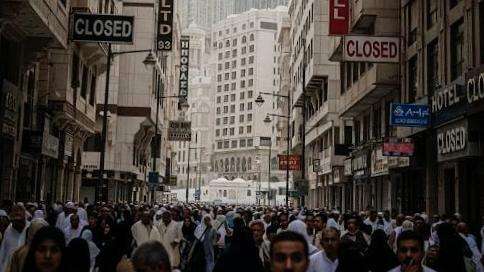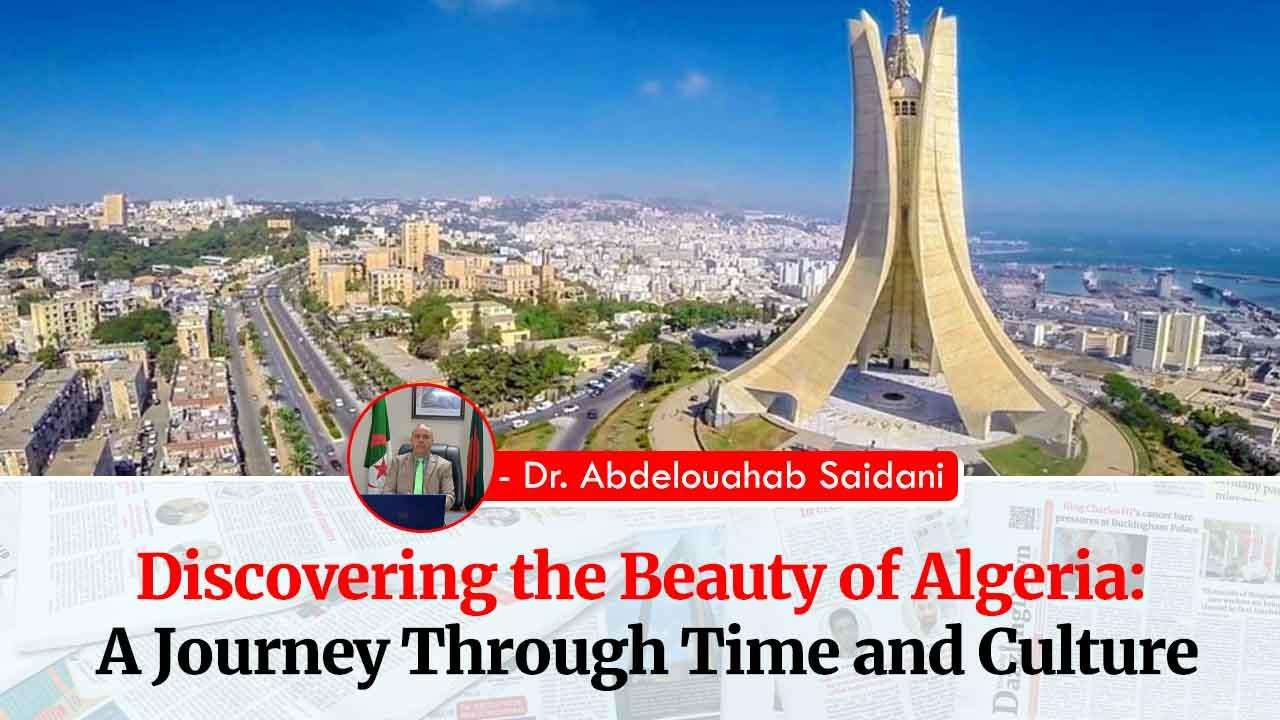A North African land of contrasts, Algeria stretches over a 2 381 741 Km2 area. Its 6000 Kilometer long borders run along Tunisia, Libya, Niger, Mali, Mauritania, Western Sahara and Morocco. In North, the Mediterranean Sea extends over 1200 km of coastline while in the South the extensive desert spreads over nearly two million square kilometers.
After having been neglected during many years, Algeria destination has experienced a renewed interest. This evolution has been marked by the appearance of new products beside the traditional stays of discovery and relaxation, while the Algerian government is setting up a strategy of development for tourism by the year 2015. Algeria has many assets. On the geographical level, four great types of relief following each other from the north to the south of the territory.
Nestled along the Mediterranean coastline and brimming with a rich tapestry of history, Algeria stands as a land where tradition and modernity coexist harmoniously. From the bustling streets of Algiers to the serene Sahara, this captivating country offers an array of experiences for travelers seeking both adventure and cultural immersion.
Alongside the Mediterranean Sea, there is a coast bordered by beaches and coves, prolonged inside by the plain of Tell and its valleys where is concentrated the main part of the arable lands and the principal major cities like Algiers, Oran, and Constantine... there are two East-West directed mountainous chains: the Tellian Atlas formed by the mounts of Tlemcen, Ouarsenis, Titteri, Djurdjura, Babor, Bibans and Edough which culminates in Lalla Khadidja (2, 308m), and the Saharian Atlas with the solid mass of Aurès culminating with the mount of Chelia (2, 328m). In the middle of the Atlas, a zone of semi-desert high plateaus, field of the esparto grass and of breeding and whose profile of a basin explains the presence of shotts (salted lakes) up to 40 meters below sea level, the shott Melhrir.
Algiers: The White City
Perched on the hills of the Sahel, Algiers, often referred to as "Algiers the White," unfolds a stunning panorama of Moorish architecture and modern marvels. Its acropolis, the Kasbah, leans against the Bouzareah massif, while the city itself cascades down to a majestic bay stretching from Pointe Pescade to La Pérouse.
The Kasbah
A UNESCO World Heritage site, the Kasbah of Algiers is a labyrinth of twisting roads, staircase-like backstreets, and historic treasures. Half of its homes reflect Ottoman influences, boasting corbelled floors, intricate woodwork, and interior courtyards adorned with ceramics and columns. Within its confines lie old mosques, Ottoman palaces, and vibrant souks. Visitors can savor local delights like chorba frik, a hearty mutton and chickpea stew, followed by a refreshing mint tea in one of the many small cafes.
Palatial Splendor
Algiers is home to some of the most exquisite palaces that echo its prestigious past. Dar Aziza, a quintessential Algerian house, showcases marble courtyards, colorful glass trellises, and intricate stuccos. Bastion 23, the palace of Raïs, features a hammam and living quarters adorned with ceramics and sculpted woodwork. Other notable palaces include Dar Mustapha and Dar Hassan, each rich in architectural grandeur and historical significance.
Historic Mosques
The city's spiritual heart lies in its mosques. The Grand Mosque, built in the 11th century by the Almoravids, exemplifies Islamic architecture with its foiled arches and an ornate minbar dating back to 1098. The Ketchawa Mosque, originally Saint Philippe Cathedral, blends Byzantine and Islamic styles, while the Betchine Mosque, constructed in 1622 by an Italian corsair-turned-Algerian admiral, is a testament to Ottoman architectural prowess.
The Coastal and Mountainous Charms of Algeria
Beyond Algiers, Algeria's diverse geography beckons exploration. The turquoise coastline east of Algiers offers picturesque beaches and coves fringed with olive trees and cypresses. The Sidi Ferruch peninsula, with its marina, provides ample opportunities for underwater fishing and marine activities.
Oran: A Blend of Cultures
Algeria's second-largest city, Oran, thrives with dynamic energy. The city's Spanish colonial history is evident in its architecture, including numerous Hispanic-Moorish buildings. Surrounded by vineyards, Oran serves as a hub for trade, industry, and culture.
Ancient Cities: Living History
Algeria is a treasure trove of ancient cities that transport visitors back in time. Among the most notable are Timgad, Tipaza, and Djemila.
Timgad
Founded in the year 100 AD by Emperor Trajan, Timgad is a masterpiece of Roman urban planning. Its well-preserved ruins include a theater, 14 thermal baths, a capitol, and a library with a semicircular reading room. The triumphal arch and the mosaics housed in the Timgad Museum are particularly noteworthy. Once a cultural hub, the city now hosts the "Aurès in Festival," celebrating local arts and crafts.
Tipaza
Tipaza, nestled at the foot of Mount Chenoua, combines seaside allure with mountainous beauty. Its rich history includes remnants of Roman, Byzantine, and early Christian civilizations. The town's archaeological sites, such as the legal basilica and ancient necropolis, make it a UNESCO World Heritage site.
Djemila
Perched on a slope near the confluence of two rivers, Djemila is a stunning example of Roman urban adaptation. Its temples, basilicas, and markets, set against a backdrop of rolling hills, reflect the ingenuity of Roman town planning. The site's altitude of 900 meters adds to its dramatic appeal.
The Sahara: A Land of Endless Horizons
Algeria's Sahara Desert is a realm of unparalleled beauty and tranquility. The Tassili n'Ajjer plateau, a UNESCO World Heritage site, is famed for its ancient rock art depicting a time when the Sahara was lush and verdant.
Tassili n'Ajjer
Exploring Tassili n'Ajjer is a journey through time. Sites like Jabbaren, Tamrit, and Sefar showcase intricate frescoes and petroglyphs that tell stories of early Saharan life. Accessible by camel or four-wheel-drive, this plateau is a haven for adventure seekers and history enthusiasts alike.
Hoggar Mountains
The Hoggar Mountains, with their rugged landscapes and towering peaks, offer a stark contrast to the desert plains. Assekrem, a hermitage perched at 2,180 meters, provides breathtaking views of the surrounding valleys and is a spiritual retreat where Father Charles de Foucauld once lived.
Tuareg Culture
Traveling through the Sahara offers a unique opportunity to engage with the Tuareg people, whose traditional lifestyle and rich cultural heritage continue to thrive. From the granitic massifs of Taessa to the vibrant oases, their resilience and artistry are evident.
The Oases: Cradles of Civilization
Algeria's oases, such as Ghardaïa, Beni Isguen, and El Ateuf, serve as sanctuaries of life in the arid desert. These settlements, founded by the Ibadites, feature distinctive architecture, bustling markets, and an unwavering commitment to preserving their cultural identity.
Conclusion
Algeria is a land where history, culture, and natural beauty converge. Whether wandering through the ancient streets of the Kasbah, marveling at Roman ruins, or basking in the serenity of the Sahara, every moment in Algeria is a step into a storybook of timeless charm. For travelers seeking a destination that offers both depth and diversity, Algeria is an unparalleled treasure waiting to be discovered.
---
Author: H.E. Dr. Abdelouahab Saidani
Ambassador, Head of Mission, Embassy of Algeria in Bangladesh



_4.jpg)




.svg)

_5.jpg)